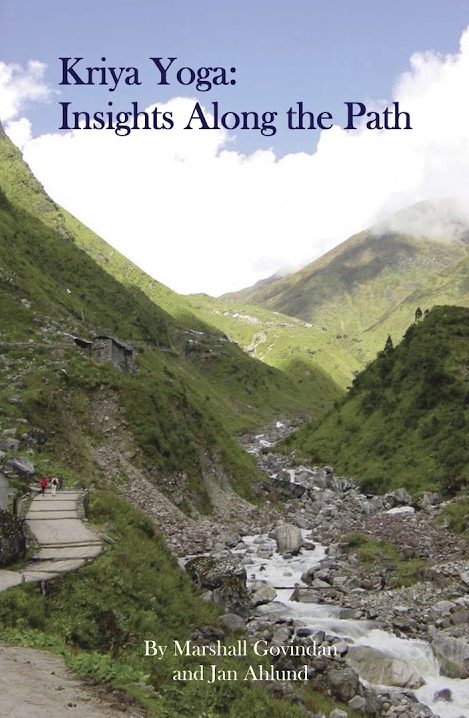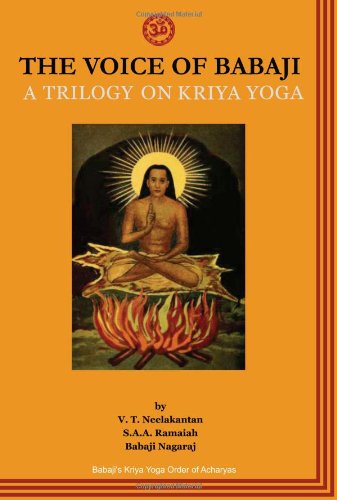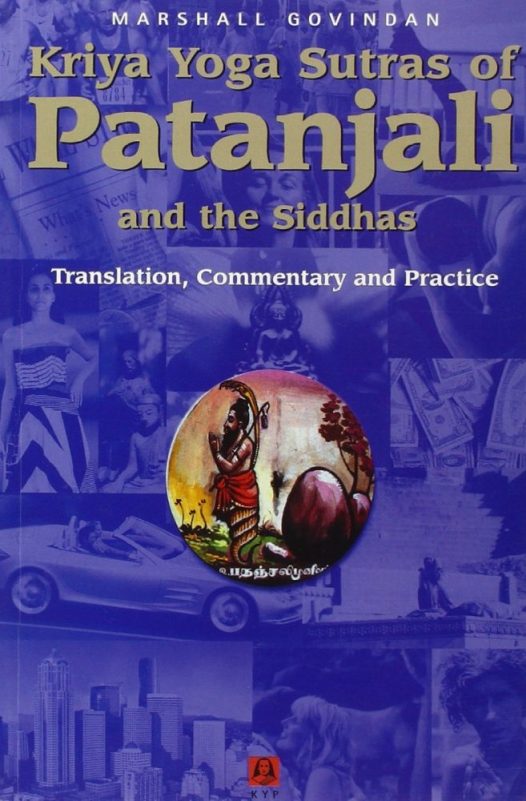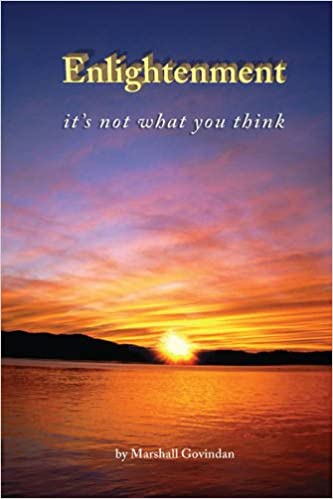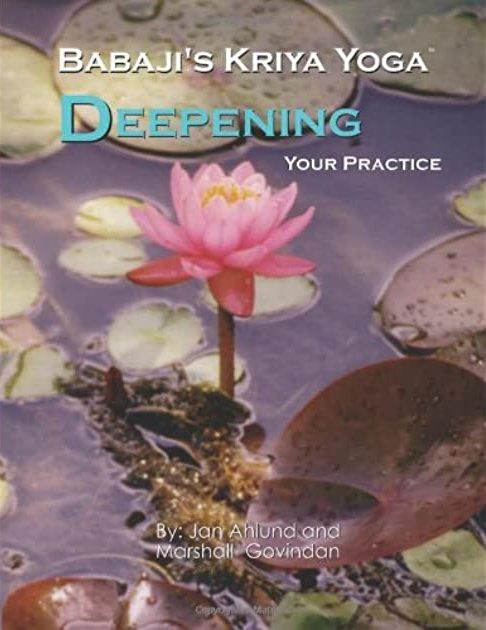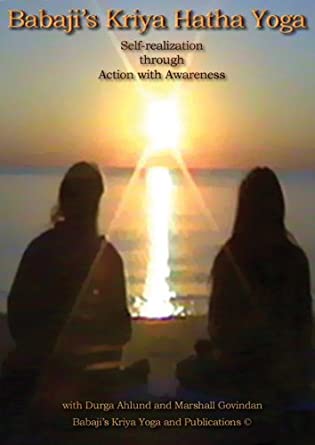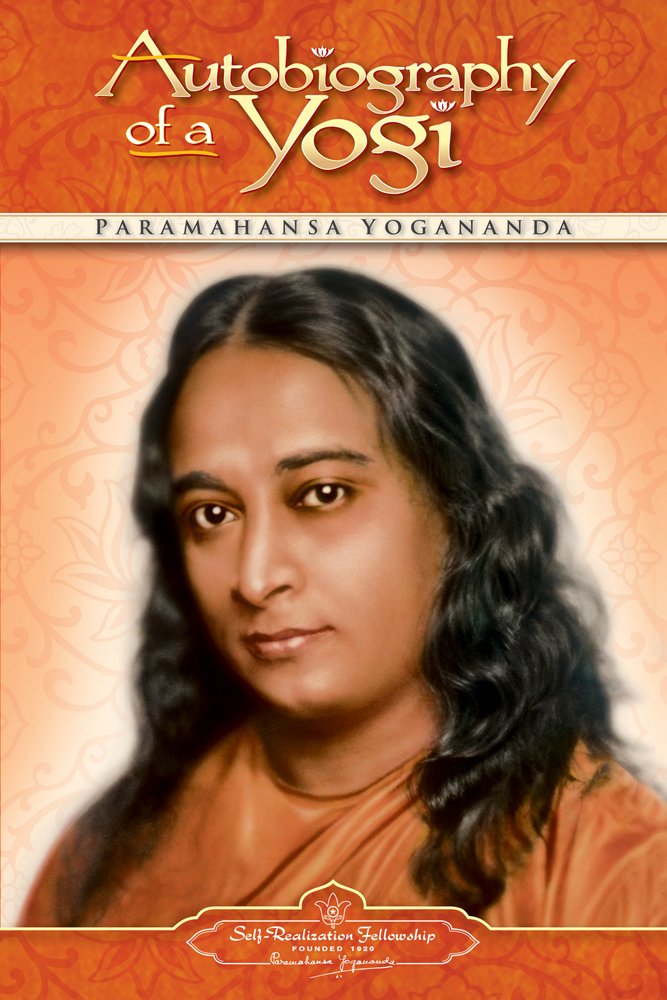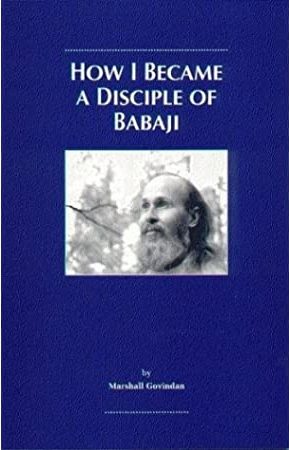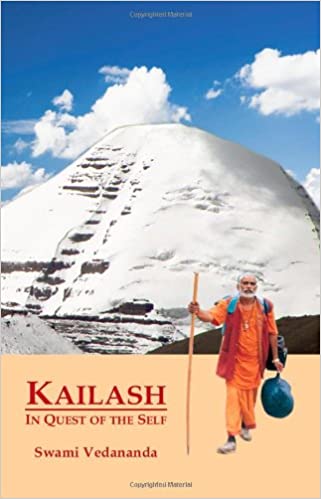
How to start practicing?
Interested in Practicing Kriya Hatha Yoga
Before initiations
you can start to practice 18 postures on a daily basis, they will bring physical and mental equilibrium.
Kriya Hatha Yoga, the scientific art of mastering the physical body, through asanas, bandahs, and mudras is the point of departure for the student of Kriya yoga. An Asana is a physical posture which produces relaxation. A Mudra is a gesture, movement or combination of Asana, Bandha and pranayama that affects the flow of life force, known as prana. It also refers to a corresponding psychic attitude. A Bandah is a psycho-muscular energy lock that directs the flow of pranic energy. They were practiced by the Siddhas, the ancient masters of Yoga to purify the nadis (the energy channel) and to eliminate energy blockages and to awaken and strengthen the chakras (Psycho-energy centers). This hatha yoga was also developed to gradually increase the transmission of pranic energy, as well as to strengthen the immune system and keep the body free of functional disorders.
The word “Hatha” is derived from two root words, “Ha” meaning sun and “tha” meaning moon. They correspond to the masculine (Yang) and femine (Yin) sides of our human nature. Hatha yoga today is mostly associated with physical postures. In the traditional teachings of the Siddhas, it was taught as an adjunct to breathing exercises. the postures also help to secure mental concentration and to integrate the two major aspects of our personality, the assertive, rational masculine and the receptive, intuitive feminine. A lack of flexibility, one one side of the body is often noted by the beginning student of yoga. By practicing the Kriya Hatha Yoga postures, this imbalance can be eliminated. The lack of flexibility is associated with energy blockages in the nadis.
After some practice, the student of yogic breathing can actually feel the flow of vital life energy (Prana) throughout the network of nadis during each breath.
It is relatively easy to control the physical body in comparison to the mental or vital bodies, as the later are subtler and less subject to the exercise of human will. The postures, bandahs and mudras bring about a state of relaxation on all five planes. They massage the internal organs and glands and stabilitze the physical body. They are effective in the prevention and cure of many diseases and functional disorders, such as diabetes, respiratory conditions and hypertension, as well as emotional instability. They can thus eliminate one of humanity’s most common sources of misery, poor health. They also help the physical body to remain stable and comfortable during meditation. The postures enable one to regulate the debilitating effects of stress and maintain balance in all situations. Their practice with continuous awareness introduces the student to meditation.
For his Kriya Hatha Yoga, Babaji has selected 18 postures with several variations from among the thousands of postures that exist in classical Hatha Yoga. These 18 cover all parts of the body effectively and efficiently and are complementary to the objectives of other phases of his yoga. Ideally they should be learned and practiced prior to learning and practicing pranayama and meditation. They remain an important part of ones practice through life, even during final stages of spiritual development and transformation.
For initiations outside of Greater China, pls visit www.babajiskriyayoga.net for more information
For initiations in China, pls write to kriya.anjani@outlook.com for more information
Interested in practicing pranayama or meditation
the Grace Course
Babaji’s Kriya Yoga offers to initiated and non-initiated students of Yoga a monthly correspondence course which is designed to deepen your understanding of the principles and practices of Yoga. The course is designed to widen our perspective of our practice at all levels physically, vitally, mentally and spiritually. It introduces the right use of will to change the course of your life. In so doing it will help us to understand how we practice Babaji’s Kriya Yoga not only for our own benefit but also for the benefit of our families, friends and benefit of the world at large. Our practice of Hatha Yoga, Pranayama, Meditation and Mantra Japa takes us to the Self. This correspondence course is such an instrument, it is a time to begin a process of sharing Grace and Love. For one year, you will receive by mail, each month, (12 issues) a course of 18-24 page developing a specific theme, which builds on each other.
1st Year
12 lessons
1 – Grace & Living a Graceful Life;
2 – Relationships: Walking the Path with Others;
3 – The Power of the Mind;
4 – Emotions: Our Adversary, our Friend;
5 – The Subtleties of Prana;
6 – A Course of Meditation;
7 – Awareness: It is really All we Have;
8 – Definite Methods, Tangible Results;
9 – Yamas: Understanding and practicing the Power of Restraint;
10 – Transcending Conditioning through Discernment;
11 – Tapas: Bringing Intensity to our Practice;
12 – Kriya Yoga, a Guru Yoga Lineage.
2nd Year
12 lessons
1 – The Universal Community and Our Place in it;
2 – Complete surrender;
3 – Kriya Yoga: the Sadhana of Action with Awareness;
4 – Caring for the Soul;
5 – Difficulties Along the Way;
6 – Karma: The Cause, Part 1;
7 – Karma: The Cause, Part 2;
8 – The Sadhana of Concentration;
9 – Blind Man’s Bluff, A Game of Hide and Seek;
10 – Fear, Is it Safe to Live Without It?;
11 – Life after Death: Awakening to Knowledge;
12 – Infinite Aum: Personal or Impersonal?.
We invite you to join us in this adventure of Self-exploration and discovery. You can begin this course at any time. You will be encouraged to send us your questions, comments and insights.
The teachings are drawn from the books dictated by Babaji in 1952 and 1953, the works of the Siddhas, Sri Aurobindo and the Mother, Ramalinga and Vedanta.
If you are interested in this, pls contact kriya.anjani@outlook.com; please specify Grace Course in the email subject.
The Annual price (for 12 lessons) is USD 30 without postage fee, which will be calculated separately depending on your location.
For more information about initiations globally, please go to the official website www.babajiskriyayoga.net
If you want to subscribe to “The Grace Course”, please click on the link.
INTERESTED IN READING MORE ABOUT YOGA
BABAJI’S KRIYA HATHA YOGA: 18 POSTURES OF RELAXATION
Asana booklet
To purchase books outside of Greater China, pls visit www.babajiskriyayoga.net for more information. To purchase books in China, pls write to kriya.anjani@outlook.com for more information
Electronic version or Paper Version
These 18 postures were selected by Babaji from among the thousands which exist to form an efficient system for rejuvenating the physical body and preparing it for the more subtle phases of his Kriya Yoga. The immortal Himalayan master is living proof of their effectiveness. Each posture has several stages, making them suitable for the beginner and experienced student. The postures are also arranged in pairs, or counterposes, facilitating the relaxation stage following each posture.
This guide is designed as a handbook, wherein each stage in each posture is individually illustrated, and explained with easy to follow instructions. The numerous benefits of each posture in the healing and prevention of various functional disorders are also indicated. An introductory chapter explains the principles to follow in their practice.
KRIYA YOGA: INSIGHTS ALONG THE PATH
Part 1: The Dilemma of human existence: Finding lasting happiness in things which do not last. Why Do We Practice Yoga? Karma: Cause or Consequence? Liking and Disliking: the Disease of the Mind. Doubts.
Part 2: Finding the spiritual path: Guru Purnima. Aspiration. Receiving the Grace of our Satguru Kriya Babaji Nagaraj. Discipleship or Devoteeship. The Significance of Initiation. What is Babaji’s Kriya Yoga? The Art of Meditation. You and What You Are Not. By Contentment, Supreme Joy is Attained. A Man’s Home is His Ashram. Satsang. Sacred Space.
Part 3: Making our life our Yoga: Moving towards equilibrium: Calmly Active, Actively Calm. What the World Needs Now is Love and Compassion. Judgment, or How to Avoid Harming others and Ourselves. Yoga as a Social Movement. All countries are my homeland and all persons are part of my family. Holy madness, Kundalini, Shakti pat and Ego-Crushing. How do we know whether we are progressing spiritually? The Yoga of the 21st Century. Tapas: Voluntary Self-Challenge. Samadhi. Kaivalyam: Absolute Freedom. Sadhana of Life. Questions and answers. How should we concentrate in practicing mantras? How to balance internal and external focus, in order to optimize both? In Advaita Vedanta, one focuses only on the Self. Why do we have other points of focus in Babaji’s Kriya Yoga? How does Babaji’s Kriya Yoga compare with the Kriya Yoga promoted by Yogananda and his successors?
"It is up to us all to choose how we would like our future to be. In making that choice, it helps to know, understand and accept ourselves, our purpose, our passions, our talents, and how we want these to manifest. A book that I highly recommend for anyone who wants to step into their Self/ Highest Potential is "Kriya Yoga: Insights Along The Path”, by Marshall Govindan and Jan Ahlund. The book is a powerful companion for aspirants, practitioners or teachers alike, who are on a path towards expanded awareness, self realisation and personal mastery. In most parts, its power is in the vast topics it covers in simple clear sincere and non-jargon and objective style. I particularly found nectar in Chapters 11 on Kaivalyadham and 12 on Sadhana of Life which encapsulated for me the questions of - Why Yoga? Why Kriya Yoga? Why be / know WHO I AM? Once you have read it, you will know how valuable it is as an aid towards remembering Who I AM, and letting go of what I am not!"
by Marina Kapur - Management consultant in the U.K.
THE VOICE OF BABAJI
Sri V.T. Neelakantan recorded verbatim a series of talks given by Satguru Kriya Babaji in 1953. These are a fountain of delight and inspiration, illuminating the Kriya Yoga path towards God realization, unity in diversity and universal love. They also reveal the magnetic personality of Babaji and how he supports us all, with much humour and wisdom. They were originally printed in three volumes: “The Voice of Babaji and Mysticism Unlocked,” “Babaji’s Masterkey to All Ills, (Kriya)” and “Babaji’s Death of Death (Kriya).” Includes the fascinating accounts of the meetings with Babaji in Madras and in the Himalayas by authors V.T. Neelakantan and Yogi S.A.A. Ramaiah. Out of print for nearly 50 years, they are profound and important statements from one of the world’s greatest living spiritual masters.
KRIYA YOGA SUTRAS OF PATANJALI & THE SIDDHAS
Patanjali refers to his yoga as “Kriya Yoga”: the “yoga of action with awareness.” His Yoga-Sutras are universally considered to be among the two or three most important texts in the field of yoga. Until now, commentators have treated it as a philosophical reference, and have largely ignored its implications for yogic practice. They have also ignored the fact that it is also an esoteric work, and that only initiates, with sufficient prior experience, can grasp its deeper meaning.
This new translation and commentary provides a practical guide to Self-realization or enlightenment. It clearly explains how to apply Patanjali’s profound philosophical teachings in everyday life, in any situation. When one practices the techniques of Kriya Yoga, it is like driving a powerful automobile. But without a roadmap, most students are “stuck in traffic” or at “dead ends.” Now for the first time, there is a clear roadmap to guide the student to remarkable destinations.
In Tamil Nadu and other southern states of India, there is a tradition of yogic adepts known as Siddhas, who are renowned for their longevity, miraculous powers, and remarkable contributions to an enduring culture. They have left a large body of literature, including Thirumandiram by the Siddha Thirumoolar, who was by many indications, a brother disciple of Patanjali.
"Marshall, your book on the sutras is terrific. A few months ago I asked Swami Nityananda what was the one thing I could do for the 200 or so people I see each week as I teach yoga and he said, "teach them Patanjali's sutras". I really like the way you have organized and presented the translation. Plus, your commentary is so understandable to a western mind that I have been using readings from it to my classes at the beginning of class as we center. They seem to be 'catching on' over time if they come to class consistently. This is a great book for us western yoga practitioners, all levels, male or female."
Martin Berson - Yoga Instructor, Hartford, Connecticut, USA
"Marshall Govindan has produced an excellent and easily readable commentary on the often arcane Yoga Sutras, the main text of classical Yoga compiled by Patanjali from older perennial yogic teachings of India. Notably, Govindan has provided a unique perspective on this profound work from the Kriya Yoga and South Indian Shaivite traditions that gives his rendering a special value for disciples on these paths. He takes the Yoga Sutras out of academic confusion and into the realm of deeper yoga practice. He reveals the many sides of the true yogic science of consciousness that go far beyond asana or popular Yoga today."
David Frawley (Vamadeva Shastri) - Author "Yoga and Ayurveda", Director of American Institute of Vedic Studies.
"A significant contribution to the sadhana of every serious yoga student, this copious (nearly 300 pages) new work, the result of a 10-year effort, includes detailed translation, tips for integrating the lessons into one's practice, references to other commentaries, and indexes to both Sanskrit and English keywords in the text."
Yoga Journal - November 2001
"Study (svadhyaya) has always been an integral aspect of Yoga. Western students, in my opinion, need to take this yogic practice more seriously. Because of its succinctness and focus on essentials, the Yoga-Sutra is ideally suited for in-depth study. Its approach is rational, systematic, and philosophical. By contrast, the Thirumandiram is ecstatic and poetic and filled with precious nuggets of yogic experience and wisdom. Both texts complement each other beautifully, and their combined study will be found illuminating and elevating. "Govindan's book provides an excellent platform for such a study. He writes from his own long experience of Kriya Yoga and a deep love and respect for the heritage of Yoga. Marshall Govindan's Kriya Yoga Sutras of Patanjali and the Siddhars is a valuable addition to the study of Yoga in general and the Yoga-Sutra in particular. I can wholeheartedly recommend it. In particular, the growing number of students of Kriya Yoga throughout the world will find his treatment indispensable, but others will benefit from it."
From the Foreword by Dr. Georg Feuerstein - Ph D. author of "The Sutras of Patanjali" and the "Encyclopedia of Yoga."
ENLIGHTENMENT: IT’S NOT WHAT YOU THINK
Enlightenment: It’s Not What You Think reveals how you can replace the perspective of the ego – the habit of identifying with the body, emotions, and thoughts – with a new perspective: the Witness, that of your soul … pure consciousness. With compelling logic, practices for everyday life, and guided meditations, the book explains how you can free yourself from suffering, enjoy inner peace, and find intuitive guidance.
The essays in this book explore the descriptions of enlightenment in various spiritual and wisdom traditions, the process of becoming enlightened, and how to overcome the inner obstacles to the achievement of that goal.
"Marshall Govindan’s latest book, Enlightenment: It's not what you think, speaks of it as maintaining continuous (seamless, gapless) awareness of the underlying Reality, a state of being, rather than a state of thinking, a state of silence, which can be achieved by practising Kriya yoga, as experienced and taught by Kriya Babaji Nagaraj. A “MUST BOOK” for every yoga practitioner."
Dr. T.N. Ganapathy - Ph. D.; Director, Tamil Yoga Siddha Research Centre; Ashoknagar, Chennai 600 083 Tamil Nadu, INDIA
"We all have within ourselves an innate and underlying quality of joy that’s always present, unchanging and available, no matter our inner or outer circumstance. So how is it, then, that we don’t experience unchanging joy in every moment? This is the critical and life-changing question that Marshall Govindan explores and implores us to understand, as well as realize in his book: Enlightenment: It’s Not What You Think. Marshall offers us a potent guide of exquisite teachings that offer us both simple and straightforward answers on how we can recognize, while revealing the obstacles that otherwise distract us from realizing our birthright of unchanging joy. This is truly a guidebook for all who wish to awaken beyond ego centeredness to open-hearted and everlasting peace."
Dr. Richard Miller - Ph. D; Author of Yoga Nidra: The Meditative Heart of Yoga and iRest Meditation: Restorative Practices for Health, Resiliency and Well-Being
"This eminently practical guide to spiritual life draws deeply from many wells of wisdom, including the Yoga Sutras of Patanjali, the Kriya Yoga of Babaji, the writings of the Tamil Siddhas, the philosophy of Sri Aurobindo, and the insights of contemporary studies of the brain. Written in an accessible style, this book will help its readers understand the quest for higher meaning, and provides a toolbox to inspire wayfarers on this most important of journeys. Immensely enjoyable reading!"
Christopher Key Chapple - Doshi Professor of Indic and Comparative Theology and Director; Master of Arts in Yoga Studies; Loyola Marymount University.
"True enlightenment is not simply an elevated state of mind but a complete change of consciousness from the limited ego to the supreme Self-realization in which we are one with all existence – extending to all time and space and beyond. Marshall Govindan reveals the secrets of the Yoga Siddhas and their transformative practices to help you approach that supreme enlightenment as the ultimate goal of all that you do."
Dr. David Frawley (Pandit Vamadeva Shastri); Director, American Institute of Vedic Studies; Yoga, Ayurveda and Jyotish Teacher; Padma Bhushan awardee from President of India; Author: Shiva, the Lord of Yoga and over thirty books
MORE BOOKS & DVD
BABAJI’S KRIYA YOGA: DEEPENING YOUR PRACTICE
This book provides detailed instructions, diagrams and photographs in the practice of a particular set of 18 Yoga asanas or postures, known as “Babaji’s Kriya Hatha Yoga.” The essays and instructions herein enable the practitioner to go beyond the development and health of the physical body, and to transform the practice of yoga asana into a spiritual practice, inducing a higher state of consciousness. Unlike earlier publications related to Hatha Yoga, this volume will show you how to transform your Hatha Yoga practice into a means for Self-Realization. It introduces students to the Five-fold Path of Babaji’s Kriya Yoga. This book is dedicated to Yoga students new to Kriya Yoga and also to Initiated students looking to deepen their own practice.
BABAJI’S KRIYA HATHA YOGA:
SELF-REALIZATION THROUGH ACTION WITH AWARENESS
Available in DVD, 2 hours 5 minutes
Learn the 18 postures developed by Babaji Nagaraj and become aware of what is aware! Become the Seer, not the Seen! Bliss arises! This unique comprehensive instructional video provides careful detailed instructions in not only the technical performance and alignment of each posture, but also in the higher states of consciousness, which they awaken. It includes an introduction into the philosophy of yoga, the nature of consciousness and the cultivation of Self-awareness.
Make your practice of yoga deeply meditative. In this beautiful DVD, the postures are taught in progressive stages, with preparatory variations making them accessible to the beginner and challenging for the experienced student of yoga. These postures, selected by Babaji, will rejuvenate and energize you! The instructions emphasize the energetic and relaxation effects. They may assist in the healing and purification of the physical and subtle bodies, thus helping to eliminate some of the most common sources of misery: poor health and mental confusion.
AUTOBIOGRAPHY OF A YOGI
Autobiography of a Yogi is at once a beautifully written account of an exceptional life and a profound introduction to the ancient science of Yoga and its time-honored tradition of meditation. Profoundly inspiring, it is at the same time vastly entertaining, warmly humorous and filled with extraordinary personages.
Self-Realization Fellowship’s editions, and none others, include extensive material added by the author after the first edition was published, including a final chapter on the closing years of his life.
Selected as “One of the 100 Best Spiritual Books of the Twentieth Century”, Autobiography of a Yogi has been translated into more than 50 languages, and is regarded worldwide as a classic of religious literature. Several million copies have been sold, and it continues to appear on best-seller lists after more than sixty consecutive years in print.
With engaging candor, eloquence, and wit, Paramahansa Yogananda tells the inspiring chronicle of his life: the experiences of his remarkable childhood, encounters with many saints and sages during his youthful search throughout India for an illumined teacher, ten years of training in the hermitage of a revered yoga master, and the thirty years that he lived and taught in America. Also recorded here are his meetings with Mahatma Gandhi, Rabindranath Tagore, Luther Burbank, the Catholic stigmatist Therese Neumann, and other celebrated spiritual personalities of East and West. The author clearly explains the subtle but definite laws behind both the ordinary events of everyday life and the extraordinary events commonly termed miracles. His absorbing life story becomes the background for a penetrating and unforgettable look at the ultimate mysteries of human existence.
HOW I BECAME A DISCIPLE OF BABAJI, 2nd edition
by M. Govindan. 90 pages. From early years of seeking through ascetic trials in India and Sri Lanka, filled with adventure and difficulties, the author shares a rare story with unusual candor and courage. His inspiring story provides rare insights into a little known world.
KAILASH: IN QUEST OF THE SELF
This is a rare, spiritual adventure story by one dedicated monk who walked on foot over 300 miles through the mountains of India, Nepal and Tibet to Mount Kailash and Lake Manasarovar, the abode of the gods on earth.
Swami Vedananda gives us a vivid and honest portrayal of the physical, psychological and spiritual challenges which he had to overcome on this very difficult pilgrimage. He shares with us the insights that guided and prodded him on, and the extraordinary visions, experiences and profound teachings given to him by remarkable yogis, saints and gods, including a 700 hundred year old Siddha.
Swamiji grants us access to his meditations.
Numerous photographs and a map show us his way.


